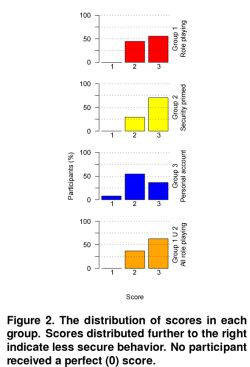Iris patterns related to personality?
This is an important news item out of Sweden.
Researchers have conducted a study looking at certain structural patterns in the iris and self-report personality characteristics. Prior research has shown that genetic differences may influence both brain and iris development, so a correlation between iris appearance and behavior is possible. Although the correlations found in this study were small, they do appear to be consistent and specifically related to some iris characteristics but not others. An analysis of effect size showed that the personality differences were “much larger than, for example, women’s tendency to be more emotional than men.”
 The implication for iris-based authentication mechanisms is interesting. If iris characteristics are possibly related to personality, then privacy concerns about who gets to capture, examine, and store iris images become more important. What might a government agency or an insurance company due with information that someone possesses personality characteristics (and perhaps genetic markers) related to approachability or impulsiveness?
The implication for iris-based authentication mechanisms is interesting. If iris characteristics are possibly related to personality, then privacy concerns about who gets to capture, examine, and store iris images become more important. What might a government agency or an insurance company due with information that someone possesses personality characteristics (and perhaps genetic markers) related to approachability or impulsiveness?
How irises ‘reveal personalities’
The team, led by Dr Matt Larsson a behavioural scientist, said: “These findings support the notion that people with different iris configurations tend to develop along different trajectories in regards to personality. “Differences in the iris can be used as a biomarker that reflects differences between people.”
The article is available at
Technorati Tags: biometrics, iris, personality, privacy, authentication, research, Sweden
Iris patterns related to personality? Read More »





 Every year thousands of Canadians are victims of identity theft. Although the number of identity theft victims is relatively small, the financial impact to an individual whose identity is stolen can be profound. In this article, Digital Home examines what identity theft is, how it happens, suggests twelve ways you can protect yourself from it, and finally what steps to take if you think you are a victim.
Every year thousands of Canadians are victims of identity theft. Although the number of identity theft victims is relatively small, the financial impact to an individual whose identity is stolen can be profound. In this article, Digital Home examines what identity theft is, how it happens, suggests twelve ways you can protect yourself from it, and finally what steps to take if you think you are a victim.